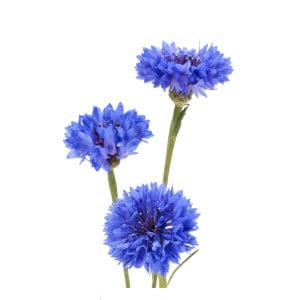Cornflower

Cornflower
Cyanus segetum
Plant family
Daisy family (Asteraceae)
Also known as
Bachelor's Button
Season Overview
Sowing
Harvest
J
F
M
A
M
J
J
A
S
O
N
D
Details
Light requirement
Sunny
Water requirement
Dry
Soil
Light (sandy)
Nutrient requirement
Medium
Light germinator
Plant distance
20 cm
Row spacing
20 cm
Seeding depth
0.5 cm
Instructions
Description
Cornflower with its blue flowers is a beautiful splash of color in the vegetable garden. Botanically, it belongs to the composite family. With its bright blue flowers, it attracts many pollinators such as bees and hoverflies, as its nectar has a very high sugar content. Its flowering period extends from May to October. The flowers are edible and are suitable as a garnish for salads. They are also said to have healing properties for acne, headaches, fever and cough.
Origin:
The cornflower is a classic crop follower species. Originally from the eastern Mediterranean, it spread in the Neolithic period with the cultivation of cereals. Today it is widespread throughout Europe, Eastern Europe and the Middle East.
Growing tips
Cornflower grows well in sunny locations with humus-rich, loose soil. It is best to sow them directly in the field from March to April. You can also grow them indoors, but this is not necessary. Since it is a light seedling, you should cover the seeds only very lightly with soil. About two weeks after sowing, you should see the first seedlings. In order to leave enough space for each individual plant, you should make sure that there is a distance of 20-30 cm between the individual plants. Fertilization is not necessary. You only need to water the cornflower after a long drought, because it has a rather low water requirement. After the flowering phase the plant dies.
Companion Plants
No companion plants
Antagonistic Plants
No antagonistic plants
Diseases
No diseases
Pests
No pests